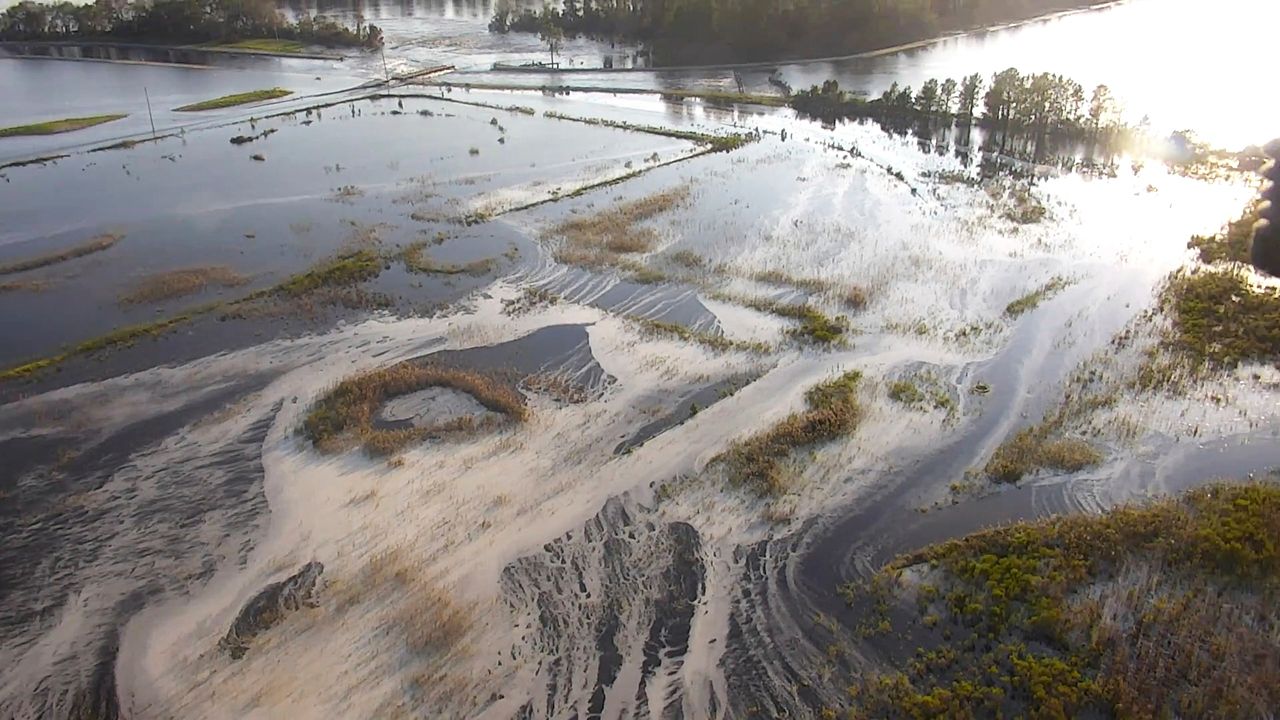Coal ash in North Carolina’s lakes is more widespread than previously thought, and it sticks around for decades, according to new research published Monday. The study included Mountain Island Lake, which is used for drinking water in Charlotte.
Researchers from Duke University and Appalachian State University tested sediment in five lakes around North Carolina and found toxic coal ash dating back to at least 70 years old.
“The bottom sediments of a lake represent a complete history of what has fallen into the lake water and settled to the bottom,” said Avner Vengosh, with Duke University.
“Using our age-dating methods, we were able to go back in time, in some cases even before the coal plant was built, and reconstruct the history of the lakes,” Vengosh said.
Coal ash contains toxic chemicals, including lead, arsenic, chromium, cadmium and mercury, which have been tied to cancer and other health problems in humans.
The ash, a byproduct of coal-fired power plants, doesn’t just sit at the bottom of a lake, Vengosh said. It is in the water and could make it into the food chain, potentially into fish people eat from the lake.
The research, published Monday in the journal Environmental Science & Technology, looked at five lakes around the state: “Hyco Lake and Mayo Lake, North of Durham in Person County; Belews Lake, northwest of Greensboro in Rockingham, Forsyth and Stokes counties; Mountain Island Lake, northwest of Charlotte in Mecklenburg County; and Lake Sutton, northwest of Wilmington in Brunswick County.”
“These are recreational lakes,” said Zhen Wang, a doctoral student at Duke and the lead author on the study. “Some of them, like Hyco Lake, were originally built for the coal plant, but over the years, it has become very desirable real estate where people build their dream homes. It looks very pristine and beautiful, but if you dig in, you find piles of toxic coal ash.”
“We did a very detailed examination of five lakes, but there are numerous lakes or open water reservoirs next to coal plants not only in North Carolina, but all over the country,” Vengosh said.
“The phenomenon that we discovered probably applies to many other sites across the U.S., and all of them are going to be vulnerable to more extreme weather events and flooding that we know is coming from global warming,” he said.
Major coal ash spills have drawn headlines in North Carolina in recent years. But that’s not the only way the toxic material got into the state’s waterways. Before coal power plants had to install scrubbers to clean the material from smokestacks, ash was a big part of their emissions.
The material can also flow naturally off coal ash ponds “as part of routine operations” into rivers and lakes, according to the researchers.
“By looking at the microscope we were able to identify the different types of coal ash that were deposited over time in the lakes,” said Ellen Cowan, a geology professor at Appalachian State University and a co-author on the study.
“At several of the sites, it appears that coal ash was initially just dumped into the nearby lake,” Cowan said. “Over time, when the Clean Air Act was enforced and scrubbers were added to the coal plant smokestacks to catch fine particulates, we see changes in the coal ash with higher proportions of small particles.”
Duke Energy spokesman Bill Norton said monitoring on these lakes shows "water quality remains safe." Duke has been working to close its coal fired power plants in North Carolina and two-thirds have already been retired, he said.
"Extensive scientific monitoring of these lakes has been underway for decades, allowing Duke Energy, governmental agencies and other stakeholders to confirm that environmental conditions remain healthy for aquatic life and human use," Norton said in an email.
"Most of the extremely small amount of ash found by the researchers occurred prior to the extensive air quality controls that have been in place for decades at our remaining coal plants, so customers will remain protected as we continue our transition to cleaner energy," he said.
Coal ash pollution is known to be a problem around coal-fired power plants, but the new study raises concerns about just how much coal ash could be out there.
“While previously we thought that lakes and groundwater are being contaminated by leaking or effluents discharge from coal ash ponds, the new findings indicate that we have underestimated the environmental impact of coal ash,” Vengosh said. “We thought that the majority of the coal ash is restricted to coal ash ponds and landfills. Now we see it’s already in the open environment.”
This story has been updated to include comment from Duke Energy.






)

